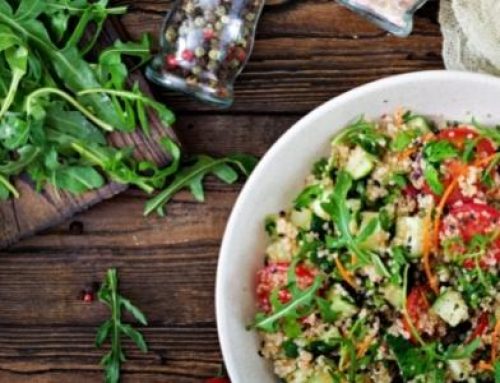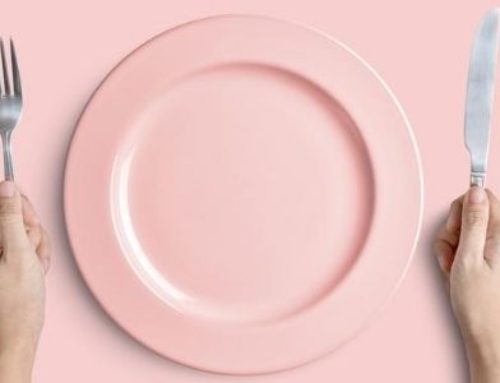
I would like to talk about a term that really bothers me! The term is ‘sugar-free’
Over the past few years, or more, a flood of recipes has hit the web, full of ‘sugar-free’ goodness.
For those of us nursing a sweet tooth and with the perils of sugar being proclaimed from the rooftops, these ‘sugar-free’ desserts could not have come at a better time. Now you can apparently have your cake and eat it too – completely sugar free!
Hold on just a second. Back up the truck. I don’t mean to burst your bubble or rock your boat, but unfortunately, I’d estimate that 99.9% (this is a made up statistic, I do not have time to count ‘sugar-free’ recipes on the internet) of dessert recipes claiming they’re sugar free, are actually lying (whether they know it or not).
My father once told me that if something seems too good to be true then it probably is.
Just because a recipe doesn’t contain white sugar (the sweet white granules you buy at the supermarket and put in your tea, otherwise known as table sugar) doesn’t mean it’s sugar free. Most natural sweeteners contain some kind of sugar.
Sugar in excess.
If sugar, (and any other nutrient for that matter), is consumed in excess of your body’s needs, it will result in weight gain and detrimental health in the future. If you’re baking biscuits, cake, a slice or bliss balls, just because you swap brown sugar for agave nectar or white sugar for barley malt syrup doesn’t mean that it’s now ‘better’ than it was before. Overall, the baked goods and desserts are still high in energy and low in nutrition when compared to other foods and should be moderated, regardless of the type of sugar that they use.
To explain this further and hopefully leave you feeling more intelligent and less confused by the end of this article we need to do a quick little lesson on what sugar actually is.
Sugar is a nutrient. It’s not evil. Its primary role within the body is to provide cells with energy.
It’s part of the carbohydrate family, along with starch (it’s rather large older brother) and fibre (who’s actually a bit of a shit – see what I did there?). Sugar occurs naturally in foods such as fruit, vegetables, honey, whole grains and dairy. We also process and refine certain plants (like cane or rice) to concentrate their sugars and create sweeteners.
What is sugar?
Whilst discussing sugar in this article I’m going to be referring to one or all of its three major types: fructose, glucose, and galactose (known as monosaccharides). When nutritionists and dietitians talk about sugar being bad for our health, they’re talking about the effect that these three molecules have on the body when they’re consumed in excess.
These three little sugars like to hold hands with each other occasionally and create what’s known as disaccharides and trisaccharides. The bonds between these sugars are broken during digestion so the individual sugars can be absorbed. These combinations include:
Sucrose: glucose and fructose
Maltose: glucose and glucose
Lactose: galactose and glucose
Maltotriose: glucose and glucose and glucose (threesome)
When I refer to sweeteners I am talking about the different products and additives available to make your food sweet. Natural sweeteners are a combination of the sugars listed above and are often made from a process whereby the natural sugars of plants are extracted and concentrated by either a heat, mechanical or chemical process.
Common natural sweeteners include the ones listed below:
Table sugar (white sugar) – resembles small white granules of different sizes made up of sucrose and is extracted and processed from cane (sugarcane). This is the most common type of sugar used in Australia. We have a huge industry that grows, processes and exports it.
Brown sugar – is a brown, fine sugar made up of sucrose that retains some of the molasses whilst processing the cane. This gives it its characteristic flavour and aroma. It holds more moisture than regular table sugar. It’s no healthier or better than white sugar.
Raw sugar – resembles light brown granules made up of sucrose with a small amount of molasses from processing. The sugar is allowed to form large crystals during processing similar to table sugar. It’s no healthier or better than white sugar.
Rapadura sugar – is a fine textured, brown coloured sugar made up of mainly sucrose and is made from evaporated cane juice. The cane is crushed and the juice is extracted and dried. No other processing occurs to the sugar. It has the same amount of calories as processed sugar but contains a small amount of nutrition (vitamins, minerals, anti-oxidants). It could be an OK swap for table sugar, but still only eat it occasionally. Despite the extra nutrition, which is not very much, the sugar is still treated the same by the body.
Golden syrup – is the by-product of refining cane sugar and has a thick, viscous texture. It contains sucrose and also fructose and glucose separately. It has quite a distinct flavour and aroma. It’s no healthier or better than white sugar.
Molasses – is a very thick and strong flavoured syrup and is the by-product of sugar manufacturing. It is basically what is leftover after the sugar is extracted. It contains sucrose and also fructose and glucose separately. Molasses also contains water, other carbohydrates and other components. It’s no healthier or better than white sugar. It requires moderation just like other sweeteners.
Honey – is a naturally occurring sweetener made by bees. It’s made up of mainly fructose and glucose separately with a tiny bit of sucrose. It may contain anti-bacterial properties, but overall is not any healthier or better than white sugar. Due to it’s high fructose content, it’s much sweeter than white sugar and so you can use less but still get the same level of sweetness.
Brown rice malt syrup – is a modified sugar created by fermenting brown rice. It’s a common sweetener for ‘I Quit Sugar’ devotees that claim it’s made up of complex carbohydrate. Brown rice syrup is made primarily from maltose and maltotriose. Maltotriose is three molecules as opposed to two, hence the reason for using the claim: complex carbohydrate. From a digestion perspective, however, maltotriose is hardly more complex than the sucrose in table sugar and should be moderated all the same.
Coconut sugar or Coconut palm sugar – is a sugar extract, created from the nectar of the flowers of a palm tree. Although it’s unrefined, it is a very pure form of sugar. It’s made up of primarily sucrose with smaller amounts of glucose and fructose. It has quite a pleasant taste and aroma. It’s no healthier or better than table sugar.
Agave syrup or nectar – is a syrup derived from the agave plant. Lots of chemicals are used in its production making claims of its ‘naturalness’ somewhat misleading. It can be made up of up to 95% fructose. It’s no healthier or better than table sugar.
Barley malt syrup – is a dark, malty flavoured syrup that’s made by cooking sprouted barley malt. It’s made up of 60% maltose and also contains soluble fibre which is unlike all the other sweeteners above. It’s not as sweet as other products and often more is needed to achieve the desired level of sweetness. It could be a good alternative to table sugar, but be mindful of how much you’re using. If you’re using more, then it is no healthier or better than table sugar.
*Please note* – This article does not go into the complex, biochemical debate of fructose and how many believe it may be the sugar that we all need to be avoiding. Appropriate interpretation of the research would suggest a moderated approach to all sugars rather than singling one out as worse than another.
Overwhelmed? I understand how you could be, but don’t be.
From a metabolic (how the body breaks down the sugar) perspective, it does not matter what type of sweetener that the sugars come from.
If you consume too much of any of them and are eating more energy than your body needs, you’ll put on weight over time and put your body at a risk of poor health.
This is also true for consuming too much fruit, especially from juice and/or dried fruits. For example: A ‘sugar free’ recipe that contains dates as the sweetener (which are very high in sugar) is not a sugar free recipe at all.
If you’re finding recipes that contain the sweeteners above, yet say ‘sugar free’ or ‘refined sugar free’, they’re misleading you. Authors will also often give these recipes names like: ‘guilt free’ or ‘skinny’ as a way of getting you to think that they’re healthier, when in reality they’re often not.
I think there’s a huge desire to find the ‘magic bullet’. We want to have our cake and eat it too but we don’t want to put on weight or put ourselves at risk of poor health. So, we find ourselves blindly following wellness blogs, so-called ‘experts’ and others claiming to have a ‘sugar-free’ recipes, possibly named: ‘guilt free fudgy chocolate bliss balls that taste like brownies’, and hope that it’s going to be the missing piece we’ve been searching for.
Rather than trying to find a way to eat cake everyday, I believe we should start to work towards being happy to just eat cake on occasion.
If you need help with managing your sugar intake and improving your overall diet quality, please contact my team. Our Signature Program will help you build long term healthy eating habits and ditch diets for good!





